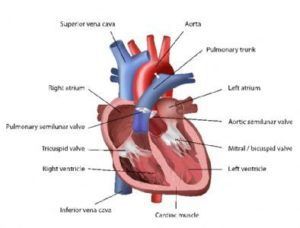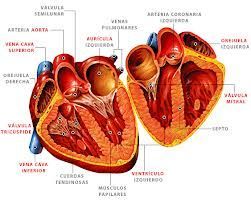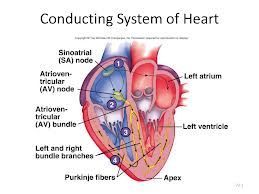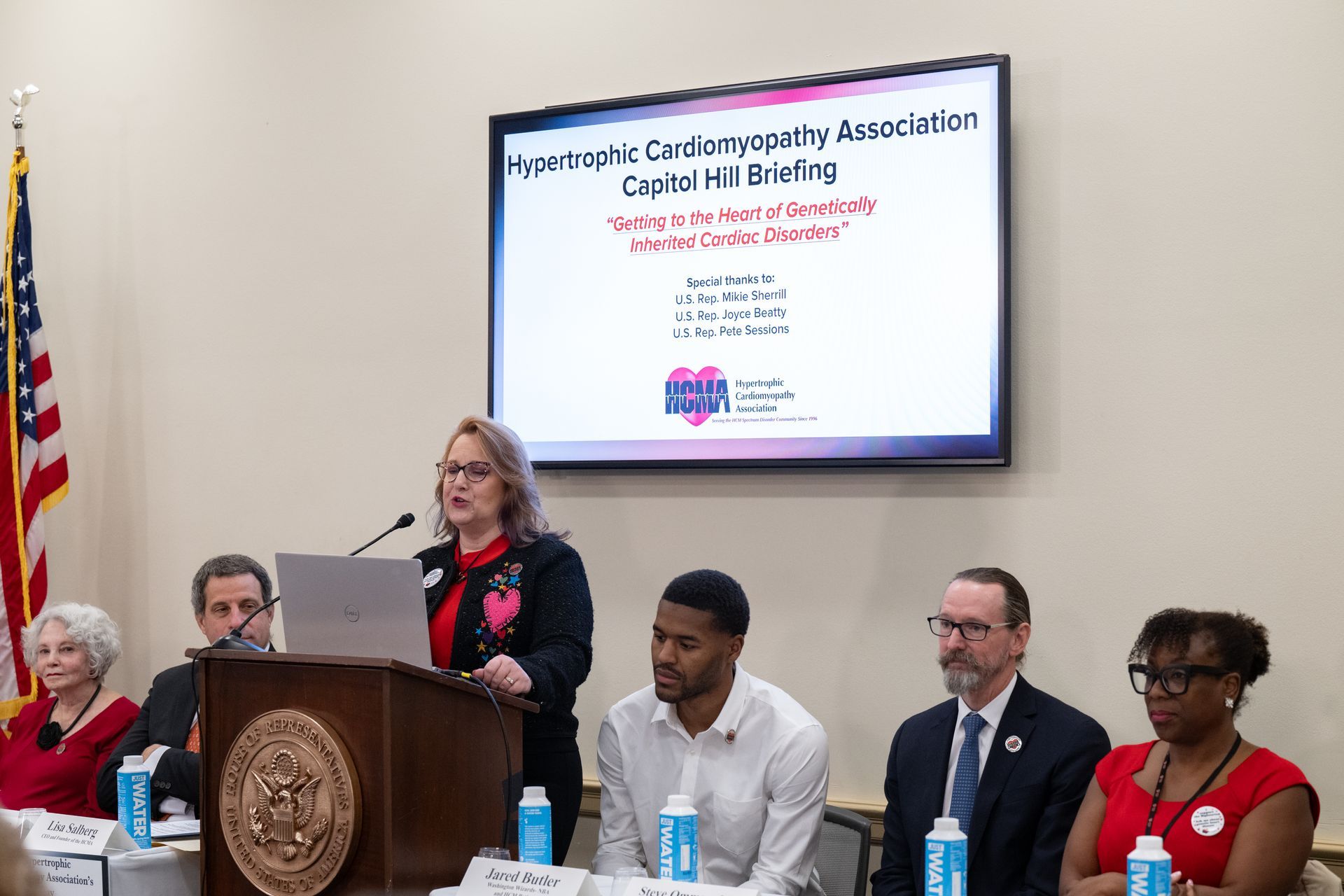HCM HEART AFFECTS
How Does Hypertrophic Cardiomyopathy Affect The Heart?
The Normal Heart
It is helpful to be familiar with the structure and function of the normal heart in order to understand the abnormalities in HCM. Fig. 3 shows a normal heart and indicates the heart chambers, valves and the direction of blood flow. The walls of the heart are made of specialized muscle known as the myocardium. The myocardium is the part of the heart which is abnormal in HCM.

Fig 3
Structure and Function
Below is a picture of the internal structure of a normal heart. The four chambers and four one-way valves are indicated. The right atrium receives blood from the body, transfers it to the lungs, which then pump it to the left atrium. It is then transferred to the left ventricle which pumps it around the body for another cycle. Figure 4 again shows a normal heart, but in this diagram the electrical activity of the heart is shown. Every heartbeat results from an electrical signal starting at the top of the heart which then passes down through it. The abnormality of the heart muscle in Hypertrophic Cardiomyopathy can sometimes interfere with this normal electrical signal.

Fig 4

The Normal Electrical Impulse in the Heart
The normal electrical impulse starts in the right atrium as shown by the arrows. It travels by special conducting tissue down through the heart and into the muscle to start a contraction.
Think of the heart like a house
A house has walls, plumbing and electricity - so does your heart.
In a normal house, the walls are generally built well, for example with bricks that are laid properly. In an HCM heart, those bricks that form the walls are cells and some of the cells are not placed properly.
The plumbing in a house lets the fluid travel in a specific pattern and the same goes for a normal heart. Sometimes the plumbing in an HCM heart can cause the fluid - in this case blood - to get blocked temporarily while attempting to leave the heart (obstruction). This type of a "plumbing" problem should not be confused with blocked arteries in the heart - that is coronary artery disease and NOT HCM.
In a house there is an electrical system that permits power to be sent through circuits and the same goes for a normal heart. In HCM, there can be a number of different types of electrical problems with the heart- some minor and some severe. In some cases the electrical system can get "stuck" in a bad circuit and send the wrong messages to your heart which can cause some forms of "arrhythmia". In other cases, the electrical system can have a serious malfunction, a more severe "arrhythmia", and send the heart into chaos, thus causing a cardiac arrest - in a home this could be compared to a complete electrical failure.
Citations:
Maron, B.J. and Salberg, L. Hypertrophic Cardiomyopathy: For patients, their families and interested physicians. Blackwell Futura: 1stedition 2001,81 pages; 2nd edition 2006, 113 pages; 3rdedition 2015
Gersh, B.J., Maron, B.J., Bonow, R.O., Dearani, J.A., Fifer, M.A., Link, M.S., et al. (2011). 2011 ACCF/AHA guidelines for the diagnosis and treatment of hypertrophic cardiomyopathy. A report of the American College of Cardiology Foundation/American Heart Association Task Force on practice guidelines. Journal of the American College of Cardiology and Circulation, 58, e212-260.
HCMA 6/2021

 Translate
Translate